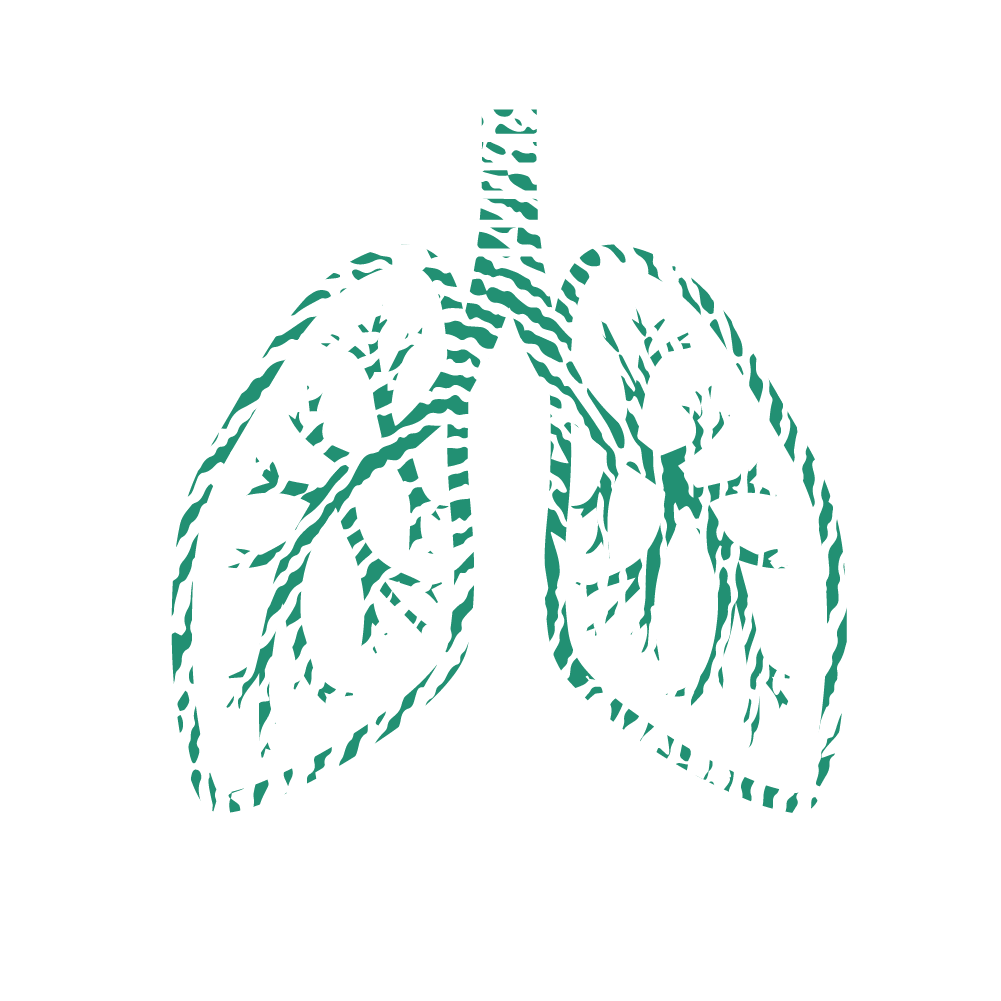Can you feel the airflow in your nose?
This episode is filled with tips to help you connect with the force of life, your
Breath
Click to learn from performance enhancement specialist David (Jacko) Jackson how to improve your breathing in simple and manageable ways immediately
About the Guest
David (Jacko) Jackson is a professional breathwork coach and master instructor at The Oxygen Advantage.
As a breathwork coach, exercise specialist, strength and conditioning coach, and former pro-rugby player, his mission is to help as many people make lasting changes using the Oxygen Advantage framework.
After a severe injury in 2013, Jacko retired from his rugby career. Through this transition period, he discovered his weaknesses around breathing and its potential to change lives.
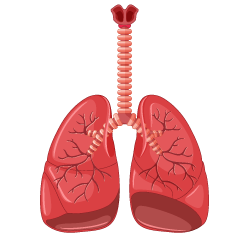
Did you know that our lungs have a total surface area of around 70 square meters, roughly the size of a tennis court? Interestingly, humans can survive with just one lung, although their breathing capacity would be significantly reduced.
The basics of how different patterns of breath can Influence our state.
Various Techniques of Breathwork
Have you ever noticed how your breathing changes in a second? The moment you take notice of your breath, it slows down. Breathing is an evolutionary process that provides you with the most oxygen by doing the least work (Mortola, 2019).
Slow breathing (at a rate of 8-12 breaths per minute) helps you achieve a peaceful & calm parasympathetic state (PNS) (Laborde et al., 2022).
“When you breathe calmly and relaxed, you will feel more calm and relaxed … it is not rocket science” – Jacko
The second you start to huff and puff, your sympathetic nervous system (SNS) goes into overdrive.
To identify whether you are in a parasympathetic state, take notice if you have any saliva (Proctor, 2016). A dry mouth means your nervous system is in a sympathetic state.
Breathing helps you control your (Harden, 2015):
- Concentration & workflow
- Arousal & Sex drive
- Relaxation & productivity
- Worry & Stress
Right now… just pause.
Take notice of your breath and see how it affects your mood (Balban et al., 2023).
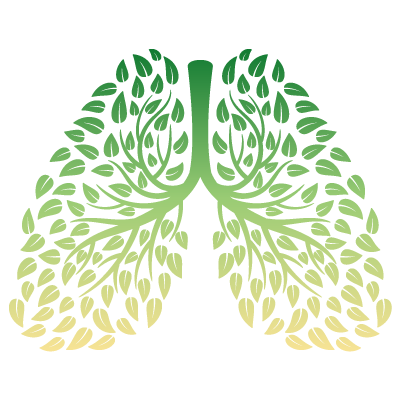
Gentle breath in; relax on the way out. Short breath holds (Parkes, 2020) for 2-4 seconds cause a slight buildup of carbon dioxide and triggers your urge to breathe again. By design, a few short breaths holds will slow down your respiratory rate and put you into a restful, parasympathetic state. To put this into practice, a few short breath-holds before a presentation (Tavoian & Craighead, 2023), or even just sitting right now reading this, reoxygenates your brain and promotes a sense of calmness. Start by gradually extending your exhale. If you need a modification, try pursing your lips slightly (Gholamrezaei, 2020). Once empty, hold at the bottom for 2, 3, 4… Now inhale & feel the airflow in your nose.
Understanding the link between our breath and our nervous system
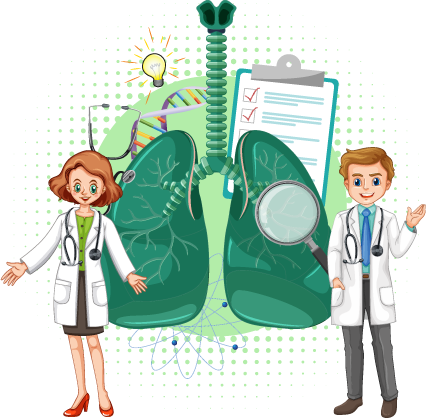
Today’s stress response is not running from a lion. Stress is more related to first-world society’s financial, material, and social pressures.
Your brain needs you to breathe to live (Moreira et al., 2021), so your brainstem is in intuitive control (Guyenet & Bayliss, 2015).
Although breathing is automatic, automatic is not always optimal. The truth is that your breathing does not correct itself; your body learns to compensate.
In your brainstem, chemoreceptors detect the amount of CO2 in your bloodstream (Chourpiliadis & Bhardwaj, 2022). If your brain determines CO2 levels are high, your blood pH is acidic. Your brain will correct this by increasing your breathing rate to take in more O2 and release extra CO2 to stabilize your blood pH.
Breathing disrupts the pH of your blood (Cairns, 2001)and causes your kidneys to work harder to maintain acid/base balance.
Imagine you are going for a morning jog and panting heavily through your mouth. This type of breathing is strenuous and tiring for your body. Your brain is clever and always seeks the easiest path. In this case, your brain wants you to stop jogging so you tire out sooner. Commit to breathing with your nose, and see how much more you can tolerate.
As your heart rate increases, as seen during a morning jog, your breathing rate increases, which gives you the urge to resist – panting with your mouth.
The relationship between your heart rate and breathing rate is as such:
Inhale = heart speeds up
Exhale = heart slows down
To add another layer of physiology to this,
Acetylcholine (ACh) is released when you exhale. ACh releases nitric oxide (NO) (Weitzberg, 2005) to decrease your heart rate and increase your HRV. ACh is also involved in enhanced cognition (Venkatesan et al., 2020), so even though your breath will not correct itself automatically, you can still train yourself to breathe more efficiently.
Mechanically, a proper breath moves your rib cage laterally and engages your diaphragm to activate your vagus nerve.
A breath through your mouth bypasses your olfactory nerve. Only when you breathe through your nose will nitric oxide (NO) be released to modulate the diameter of your blood vessels and support your blood pressure.
Control over your breath allows you to react appropriately, perform higher, and stress less.
Breathwork is a powerful intervention in the modern setting
When you feel a panic attack brewing, do not panic. Instead, just pause and try to take control of your breath. This small action can help you regain control and calm down by extending your exhale.
If you want to break out of the social norm, you must be very intentional about it. It is easy to get stuck in your routines, but taking the time to make a change consciously is how you will stand out.
Jacko says, “Awareness is the key to change,” especially when it comes to living better and performing higher.
Undoing the harmful patterns that emerge and the important concept of efficiency
It is incredible how much you can abuse your body and still live. However, habits like shallow, vertical mouth breathing can negatively impact your nervous system. Understanding the two-fold nature of a single breath – speed and volume – is crucial in breaking this habit.
A faster respiratory rate often leads to mouth breathing, which decreases moisture levels by up to 40%.
Practicing breathing techniques that focus on depth and lengthening, as well as breathing into your face, improves the efficiency of your breathing and reduces the need for excessive respiratory effort (Goligher et al., 2020).
When your breathing is not optimal, you must breathe more, which can further strain your body.
Jacko's personal journey with breathing and breathwork.
During his journey with breathing and breathwork, Jacko experienced moments of uncertainty and doubt, wondering if he was even breathing correctly.
He faced extreme challenges related to a traumatic brain injury (TBI) from rugby that affected his ability to breathe correctly.
Despite these obstacles, Jacko continues to explore different breathing techniques and helps others to gain confidence in their breathing mechanics and efficiency.
The adverse effects of vertical breathing and correcting these in accordance with our design
Your brain takes the path of least resistance, but when you practice vertical breathing, you make it harder for yourself by resisting the pull of gravity during inhalation (Jones et al., 2022).
Instead of breathing up your nostrils, try breathing into your face.
This technique is especially beneficial if you struggle to access your diaphragm. Even though the changes may seem small and insignificant, they impact your overall health and performance.
So, do not be afraid to touch your body and explore different breathing techniques to help you breathe easier and live better.
Yoga and the learning curve about the central role of the breath
Low-impact style of yoga connects you with your breath (Govindaraj et al., 2016). Jacko recommends yoga (Brown & Gerbarg, 2005) when training his clients to achieve a continuous breath and body movement flow. Yoga encourages you to be mindful of your movements and your breath (Brown & Gerbarg, 2005).
As a general guide to moving with the rhythm of your breath – inhale when you move up or into an open position, and exhale when you push down or into a closed position.
With some practice, you will become more mindful of your breath and body to help you be more aware of the present moment.
Jacko talks about carbon dioxide and developing our tolerance
Gradually increasing your CO2 levels by using 2-3-4 breath holds can have numerous benefits for your body (Magnon et al., 2021):
- improve vagal tone (ANS)
- less sensitive to CO2
- the body can tolerate CO2
- O2 is released more quickly and efficiently
- better circulation
- helps modulate the diameter of blood vessels to control BP
By becoming less sensitive to CO2, your body can tolerate increased carbon dioxide levels, leading to more efficient oxygen release and better circulation (Linnarsson, 1994).
Breathing less, lighter, and gentler by holding your breath for 2,3, or 4-second pauses gradually increases your CO2 levels.
Diagnosing our breathing habits and problems and reaching an optimal balance
Surprisingly, no respiratory rate assessment has been assessed after 60 years of traumatic brain injury (TBI) research.
It is difficult to tell if you are struggling with breathing until you rest (Schramm, 2022).
Your body needs reminders to breathe, especially when at rest.
Breathing slower is calming for your body, and optimal breathing improves vagal tone and sports performance.
Jacko’s theory says, “Breathing patterns limit fitness.”
When your breathing is optimal, exercise becomes more enjoyable because you are not out of breath!
Improving sleep through our approach to breathing during the day and before bedtime
While asleep, you are not in control of your breathing, and if your nose is clogged, you are more likely to breathe through your mouth.
Snoring often results from mouth breathing during sleep (Lee et al., 2022). To avoid this, it is essential to consciously utilize your nose during the day to keep it open and transparent.
One way to ensure a clear nasal passage before bed is to practice box breathing to induce a parasympathetic state.
When your mind races, your respiratory rate (RR) increased, leading to shallow breathing and decreased oxygenation.
An optimal respiratory rate is 10-12 breaths per minute to remain calm and relaxed. You can improve your sleep and reduce snoring by training to breathe through your nose and maintain a steady respiratory rate. Breathwork before bed can help you transition between wakefulness and sleep (Kubin, 2022).
Benefits of breathwork before bed:
- Increases Deep sleep
- Increases Restorative sleep
- Increases HRV
- Decreases HR
- Decreases sleep latency
Boxed breathing in combination with some restraint to promote CO2 tolerance.
Starting a breathwork routine can be challenging, especially if you are unsure where to begin.
One helpful tip is to set a timer for a specific amount of time, such as one minute, to start.
When you begin counting your breaths, you will naturally start to breathe slower and more deeply, which can help to reduce stress and anxiety.
One popular breathwork is called “boxed breathing” (Balban et al., 2023), where you inhale for four seconds, hold your breath for four seconds, exhale for four seconds, and then hold your breath again for four seconds.
Box breathing, alongside 2,3,4 second pauses, helps build up carbon dioxide concentrations and strengthens tolerance. Regular practice can improve your breathing and reduce stress in your daily life.
Misconceptions about breath size and efficiency
Your breathing speed influences your nervous system (Perciavalle et al., 2017). In the same breath, the depth of your breathing determines how efficient your breathing is.
If you want to improve your breathing, focusing on speed and depth is essential. One way to do this is by using short breath holds for a subtle buildup of CO2 to create a chemo sensation.
CO2 buildup can help influence the size and depth of your breath. However, this can also create a psychological sensation of air hunger, which can be challenging to overcome.
It is essential to strike a balance between CO2 sensitivity and blood flow, as being too CO2-sensitized can decrease blood flow and have opposite effects.
Jacko comments briefly on breath-holding exercises
Research shows that sprinting while holding your breath after exhaling can have several benefits (Lapointe et al., 2020).
These include:
- Increase in repeat sprint ability
- Increase in anaerobic activity
- increase in blood flow for buffering acidity from lactate.
Jacko, a renowned fitness expert, believes this training method is simple and effective.
One technique to help with this is to purse your lips while exhaling, which helps slow down your breath and improve control.
This training focuses on end-tidal volume, or the air remaining in your lungs after exhaling, to help improve your breathing efficiency during sprints.
Incorporating breath-hold sprints into your training routine and focusing on proper breathing mechanics improves your athletic performance and overall fitness.
A simple tip from Jacko about nose breathing during your workouts
Your nose is a user or loser organ, meaning you will lose it if you do not use it. Breathing through the nose is essential for optimal health and fitness.
Nasal breathing filters and humidifies the air, warms it up and helps to increase oxygen uptake in your lungs.
When it comes to breathing, quality is always more important than quantity. Taking deep and controlled breaths is essential for improving fitness and training harder and longer.
Breathwork helps to increase lung capacity and oxygen supply to the muscles for you to perform higher.
“Can you ask your body to take a slightly lower volume breath, knowing your oxygen saturation is nearly full anyway?”
-Jacko
Actionable Steps
Breathwork mechanics
Practice Breathwork holds = Air hunger drills
see here: How to Measure Your BOLT Score
Breathwork techniques
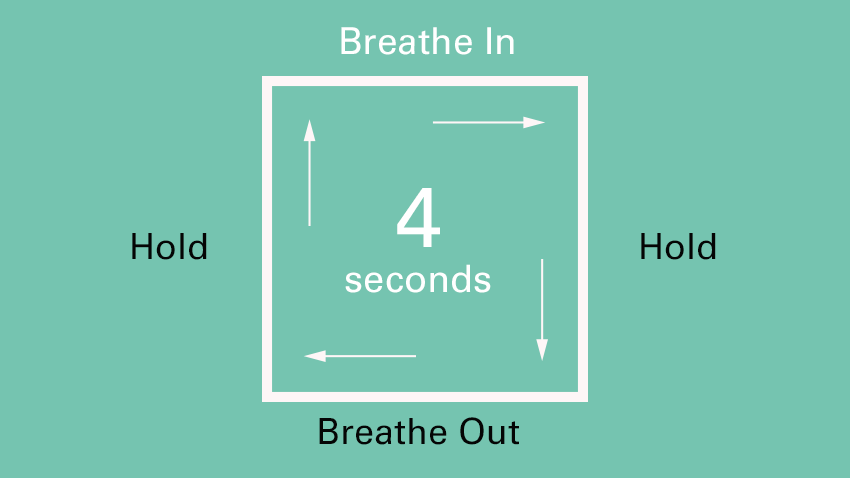
When to practice?
Conclusion
Breathing is absolutely essential for life and can be used as a powerful tool to positively impact your life.
Once you understand the science behind your breath, you can easily start to incorporate specific techniques into your daily routine. By following the actionable steps, you can experience the numerous benefits of breathwork from stress reduction to improved athletic performance.
Supporting Evidence
Balban, M. Y., Neri, E., Kogon, M. M., Weed, L., Nouriani, B., Jo, B., Holl, G., Zeitzer, J. M., Spiegel, D., & Huberman, A. D. (2023, January 17). Brief structured respiration practices enhance mood and reduce physiological arousal. PubMed. Retrieved April 23, 2023, from https://pubmed.ncbi.nlm.nih.gov/36630953/
Brown, R. P., & Gerbarg, P. L. (2005, February). Sudarshan Kriya yogic breathing in the treatment of stress, anxiety, and depression: part I-neurophysiologic model. PubMed. Retrieved April 20, 2023, from https://pubmed.ncbi.nlm.nih.gov/15750381/
Brown, R. P., & Gerbarg, P. L. (2005, August). Sudarshan Kriya Yogic breathing in the treatment of stress, anxiety, and depression. Part II–clinical applications and guidelines. PubMed. Retrieved April 20, 2023, from https://pubmed.ncbi.nlm.nih.gov/16131297/
Cairns, R. (2001). pH, hypoxia and metastasis. PubMed. Retrieved April 23, 2023, from https://pubmed.ncbi.nlm.nih.gov/11727927/
Chourpiliadis, C., & Bhardwaj, A. (2022, September 12). Physiology, Respiratory Rate. PubMed. Retrieved April 20, 2023, from https://pubmed.ncbi.nlm.nih.gov/30725991/
Gholamrezaei, A. (2020, October 27). Psychophysiological responses to various slow, deep breathing techniques. PubMed. Retrieved April 20, 2023, from https://pubmed.ncbi.nlm.nih.gov/33111377/
Goligher, E. C., Jonkman, A. H., & Dianti, J. (2020). Clinical strategies for implementing lung and diaphragm-protective ventilation: avoiding insufficient and excessive effort. PubMed. Retrieved April 23, 2023, from https://pubmed.ncbi.nlm.nih.gov/33140181/
Govindaraj, R., Karmani, S., & Varambally, S. (2016). Yoga and physical exercise – a review and comparison. PubMed. Retrieved April 20, 2023, from https://pubmed.ncbi.nlm.nih.gov/27044898/
Guyenet, P. G., & Bayliss, D. A. (2015, September 2). Neural Control of Breathing and CO2 Homeostasis. PubMed. Retrieved April 20, 2023, from https://pubmed.ncbi.nlm.nih.gov/26335642/
Harden, K. (2015, June). Self-regulation of breathing as a primary treatment for anxiety. PubMed. Retrieved April 20, 2023, from https://pubmed.ncbi.nlm.nih.gov/25869930/
Jones, M. W., Brett, K., Han, N., & Wyatt, A. H. (2022, September 26). Hyperbaric Physics. PubMed. Retrieved April 20, 2023, from https://pubmed.ncbi.nlm.nih.gov/28846268/
Kubin, L. (2022). Breathing during sleep. PubMed. Retrieved April 23, 2023, from https://pubmed.ncbi.nlm.nih.gov/35965026/
Laborde, S., Allen, M. S., Borges, U., Dosseville, F., & Hosang, T. J. (2022). Effects of voluntary slow breathing on heart rate and heart rate variability: A systematic review and a meta-analysis. PubMed. Retrieved April 20, 2023, from https://pubmed.ncbi.nlm.nih.gov/35623448/
Lapointe, J., Deschenes, P. P., Woorons, X., Lemaitre, F., & Billaut, F. (2020, April 3). Impact of Hypoventilation Training on Muscle Oxygenation, Myoelectrical Changes, Systemic [K+], and Repeated-Sprint Ability in Basketball Players. PubMed. Retrieved April 23, 2023, from https://pubmed.ncbi.nlm.nih.gov/33345021/
Lee, Y.-C., Lu, C.-T., Cheng, W.-N., & Li, H.-Y. (2022, September 13). The Impact of Mouth-Taping in Mouth-Breathers with Mild Obstructive Sleep Apnea: A Preliminary Study. PubMed. Retrieved April 23, 2023, from https://pubmed.ncbi.nlm.nih.gov/36141367/
Linnarsson, D. (1994). Tissue oxygen and carbon dioxide stores and breath-hold diving in humans. PubMed. Retrieved April 23, 2023, from https://pubmed.ncbi.nlm.nih.gov/8002498/
Magnon, V., Dutheil, F., & Vallet, G. T. (2021, September 29). Benefits from one session of deep and slow breathing on vagal tone and anxiety in young and older adults. PubMed. Retrieved April 23, 2023, from https://pubmed.ncbi.nlm.nih.gov/34588511/
Moreira, T. S., Sobrinho, C. R., & Falquetto, B. (2021, March 1). The retrotrapezoid nucleus and the neuromodulation of breathing. PubMed. Retrieved April 23, 2023, from https://pubmed.ncbi.nlm.nih.gov/33427575/
Mortola, J. P. (2019, March). How to breathe? Respiratory mechanics and breathing pattern. PubMed. Retrieved April 20, 2023, from https://pubmed.ncbi.nlm.nih.gov/30605732/
Parkes, M. (2020). Defining short and prolonged breath-holds. PubMed. Retrieved April 20, 2023, from https://pubmed.ncbi.nlm.nih.gov/32484713/
Perciavalle, V., Blandini, M., Fecarotta, P., Buscemi, A., Corrado, D. D., Bertolo, L., Fichera, F., & Coco, M. (2017). The role of deep breathing on stress. PubMed. Retrieved April 23, 2023, from https://pubmed.ncbi.nlm.nih.gov/27995346/
Proctor, G. B. (2016). The physiology of salivary secretion. PubMed. Retrieved April 20, 2023, from https://pubmed.ncbi.nlm.nih.gov/26662479/
Schramm, W. (2022, October 25). The (human) respiratory rate at rest. PubMed. Retrieved April 20, 2023, from https://pubmed.ncbi.nlm.nih.gov/36282355/
Tavoian, D., & Craighead, D. H. (2023, January 12). Deep breathing exercise at work: Potential applications and impact. PubMed. Retrieved April 23, 2023, from https://pubmed.ncbi.nlm.nih.gov/36711016/
Venkatesan, S., Jeoung, H.-S., Chen, T., & Power, S. K. (2020). Endogenous Acetylcholine and Its Modulation of Cortical Microcircuits to Enhance Cognition. PubMed. Retrieved April 23, 2023, from https://pubmed.ncbi.nlm.nih.gov/32601996/
Weitzberg, E. (2005). Exhaled nitric oxide before and after cardiac surgery with cardiopulmonary bypass–response to acetylcholine and nitroglycerin. PubMed. Retrieved April 23, 2023, from https://pubmed.ncbi.nlm.nih.gov/15542536/

